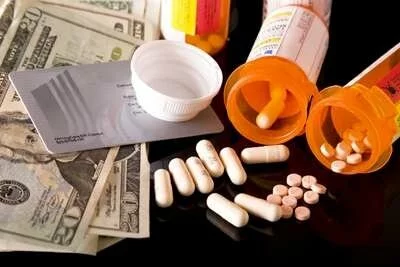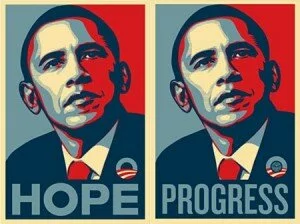As readers of this blog know, we have been following the proposed Pharmaceutical Market Access and Drug Safety Act carefully as it wends its way through Congress. So far, neither the House nor Senate versions of the bill have gotten very far since their introduction in early March, although there has been some talk that the Senate bill may be put to a vote within a matter of weeks.
For those of you who would like to learn more about this proposed legislation, which would allow American consumers to legally purchase prescription drugs from Canada and other Tier One countries, you can read the full text of the House bill here, and a summary here.
Why do we need this legislation passed? The bill makes the case in seven points:
And what would passage of the bill achieve? Here’s a summary:
Pharmaceutical Market Access and Drug Safety Act of 2009 – Amends the Federal Food, Drug, and Cosmetic Act (FFDCA) to revise provisions governing the importation of prescription drugs. Waives the limitation on importation of prescription drugs that have been exported from the United States.
Prohibits the importation of a qualifying drug unless such drug is imported by: (1) a registered importer; or (2) an individual for personal use.
Establishes registration conditions for importers and exporters. Requires the Secretary of Health and Human Services to inspect places of business, verify chains of custody, inspect facilities, and determine compliance with registration conditions.
Sets forth provisions governing the importation of qualifying drugs that are different from U.S. label drugs, including standards for judging such differences.
Prohibits manufacturers from: (1) discriminating against registered exporters or importers; (2) causing there to be a difference in a prescription drug distributed in the United States and one distributed in a permitted country; (3) engaging in actions to restrict, prohibit, or delay the importation of a qualifying drug; or (4) engaging in any action that the Federal Trade Commission (FTC) determines discriminates against a person that engages or attempts to engage in the importation of a qualifying drug.
States that the resale in the United States of prescription drugs that were properly sold abroad is not patent infringement.
Requires the Secretary to educate consumers regarding prescription drug importation.
Sets forth provisions governing the sale of prescription drugs through an Internet site. Includes the dispensing or selling of a prescription drug in violation of this Act as a prohibited act under FFDCA.
Prohibits the introduction of restricted transactions with unregistered foreign pharmacies into a payment system or the completion of such transactions using a payment system.
We wholeheartedly support the Pharmaceutical Market Access and Drug Safety Act, and we encourage you to contact your Congressman and Senator to show your support as well.
 You are probably aware by now of Medicare Part D, which provides a prescription drug benefit to seniors. But did you know that you also may be able to qualify for extra help from Social Security?
You are probably aware by now of Medicare Part D, which provides a prescription drug benefit to seniors. But did you know that you also may be able to qualify for extra help from Social Security?
If you are covered by Medicare but have limited income and resources, Social Security may step up to pay part of your monthly premiums, annual deductibles and prescription co-payments. The extra help is worth an average of $3,900 per year.
You can qualify for extra help if you have income limited to $16,245 for an individual or $21, 855 for a married couple living together.
Even if your annual income is higher, however, you still may be able to get some help depending on your specific circumstances. These include:
- Supporting other family members who live with you;
- Having earnings from work;
- Living in Alaska or Hawaii; and/or
- Having resources limited to $12,510 for an individual or $25,010 for a married couple living together. Resources include such things as bank accounts, stocks and bonds.
Social Security has an online application for those interested. You can also call Social Security at 1-800-772-1213 and ask for the Application for Help with Medicare Prescription Drug Plan Costs, or go to the nearest Social Security office.
To learn more about the Medicare prescription drug plans and special enrollment periods, visit www.medicare.gov or call 1-800-MEDICARE.

You probably didn’t know it, but May is officially Older Americans Month. Since many members of the eDrugSearch.com community are seniors, and we are keenly aware of their struggles in managing their prescription drug costs, we thought we would take this opportunity to share some facts about the older population that might surprise you, courtesy of the Department of Health and Human Services Administration on Aging –
- The older population — persons 65 years or older — represents about 12.4 percent of the U.S. population, about one in every eight Americans.
- By 2030, there will be about 71.5 million older persons, more than twice their number in 2000, representing about 20 percent of the U.S. population.
- In 2006 older consumers averaged out-of-pocket health care expenditures of $4,631, an increase of 62 percent since 1996. In contrast, the total population spent considerably less, averaging $2,853 in out-of-pocket costs.
- Older Americans spent 12.7 percent of their total expenditures on health, more than twice the proportion spent by all consumers (5.7 percent).
- Health costs incurred on average by older consumers in 2006 (the latest year for which data is available) consisted of $2,770 (60 percent) for insurance, $859 (18 percent) for drugs, $844 (18.5 percent) for medical services, and $159 (3 percent) for medical supplies.
Unfortunately, our seniors too often bear the brunt of our overpriced healthcare system. While the issue of skyrocketing drug costs for seniors has received less media attention since Medicare Part D was introduced in 2006, the truth is that this costly new entitlement program has helped insurance companies and pharmaceutical companies far more than it has helped individual seniors (as Suddenly Senior explains).
What’s more, many seniors are unaware that they may qualify for additional financial assistance with their prescription drugs and other medical bills.
To commemorate Older Americans Month, we encourage you to tell a senior you love (and that can include yourself!) about BenefitsCheckUp, a service of the National Council on Aging that helps match seniors with benefits programs. BenefitsCheckUp has helped more than 2.2 million people find over $7.2 billion worth of annual benefits.
Take your BenefitsCheckUp here.
Image source

I read an op-ed in the Dallas Morning News last Thursday that really impressed me, giving me hope that true healthcare reform may be just around the corner.
The piece was co-written by Republican Senator John Cornyn of Texas and Democratic Senator Tom Harkin of Iowa. Its purpose was to advocate the proposed Healthy Workforce Act, which the senators introduced last month with the White House’s endorsement.
This bill is a perfect example of the kind of legislation that both parties can get behind. It gives substantial tax credits to businesses that offer a comprehensive wellness program to their employees, encompassing employee gyms, smoking-cessation support, nutrition programs, and other initiatives.
Sounds like a no-brainer to me. Some excerpts from the op-ed (which we’ve re-formatted into bullet points):
- Corporations are spending untold tens of billions on illness, hospitalization, absenteeism and lost productivity. Wouldn’t it make better sense — and better profitability — to shift a large share of those health care dollars toward wellness and disease prevention?
- Chronic diseases account for more than 75 percent of current U.S. medical expenditures. This includes heart disease, cancer, diabetes, stress and depression — many of which are preventable by changes in diet and lifestyle. Yet less than 3 percent of our health care spending goes toward prevention and wellness.
- Today’s negative health trends are having a profound impact on the profits and competitiveness of U.S. businesses. Average employer medical costs increased 72 percent between 2000 and 2006 — more than 10 percent a year. Employers are bearing the cost of diet-related chronic disease and obesity — through costlier health care plans and higher absenteeism rates.
- Research shows that, on average, it costs four times more to ensure an employee who has diabetes than one who does not. Even worse, productivity losses due to poor employee health are more costly to businesses than medical costs.
- Workplace wellness programs are economical, typically costing $20 to $200 per employee. And they are a good investment, with some programs producing $10 in returns for each dollar invested.
I checked out the bill at WashingtonWatch.com and saw that 93 percent of those voting in their online poll supported it. That would seem to be a good sign.
However, the bill does have its opponents. As the New York Times reports:
Under Mr. Harkin’s proposal, employers could obtain tax credits for programs that offer periodic screenings for health problems and counseling to help employees adopt healthier lifestyles. Programs could focus on tobacco use, obesity, physical fitness, nutrition and depression, he said.
Growing numbers of employers have adopted wellness programs after finding that they can lower health costs and increase the productivity of workers. Financial incentives include gift certificates and premium discounts or surcharges. Critics say that holding people financially responsible for their health behavior is potentially unfair and that employers have no business prying into their employees’ private lives.
Lewis Maltby, president of the National Workrights Institute, a research and advocacy group, said financial rewards and penalties were often a form of lifestyle discrimination. “You are supposed to be paid on the basis of how you do your job, not how often you go to the gym or how many cheeseburgers you eat,†Mr. Maltby said.
Let’s hope that common sense will win out over “cheeseburger-lovers’ rights” in this instance.

Copays used to be a reminder of how nice it was to have health insurance. Now, too often they are a reminder of how little insurance we really have.
Not long ago, copays for prescription drugs were almost universally small, flat fees — as little as $5, no matter how expensive the medication you required.
The original rationale for the copay was to prevent people from seeking unnecessary care, such as visiting the doctor whenever they had the sniffles. The underlying assumption was that without a small copay, consumers would view medical care as “free” and overuse it.
That may have been the original reason for copays. But it’s not the reason anymore.
Today, those “small” flat fees have grown to as much as $50 or more per 30 day prescription — and that’s not the half of it.
Now, many insurers are demanding that patients pay co-pays based on a percentage of the retail price of expensive medications — as much as 33 percent or more of the total cost.
As NaturalNews.com has reported:
Hundreds of drugs are now being priced this new way. These drugs are used to treat diseases that are fairly common, including multiple sclerosis, rheumatoid arthritis, hemophilia, hepatitis C and some kinds of cancer. Unfortunately, there are no generic equivalents for these drugs, so patients are being forced to pay these prices or go without.
People are “going without” because the new copay system means that some patients are required to pay thousands of dollars out of pocket for their prescriptions — even though they have insurance.
It makes you question the very definition of insurance, doesn’t it?
Fortunately, for those who are struggling with co-pay expenses, there is a non-profit organization called the Patient Advocate Foundation (PAF) that can help.
The PAF Co-Pay Relief Program provides direct financial assistance to insured patients, including Medicare Part D beneficiaries, who qualify based on medical and financial criteria. The program offers personal service through phone counselors, who guide patients through the enrollment process.
The program assists insured patients who are being treated for the following conditions: breast, lung, lymphoma, prostate, kidney, colon, pancreatic, and head/neck cancers; malignant brain tumor; sarcoma; diabetes; multiple myeloma; myelodysplastic syndrome (and other pre-leukemia diseases); osteoporosis; pain; hepatitis C; rheumatoid arthritis; selected autoimmune disorders; and CIA/CIN.
If you are struggling to afford your drug copayments, call the PAF Co-Pay Relief Program at 1-866-512-3861 or apply for help online.

Since we are headquartered in San Antonio, eDrugSearch.com is located relatively close to ground zero in the current swine flu outbreak. The first H1N1 death in the United States was here in Texas, and today, Dr. Marcus Gitterle, a New Braunfels emergency medicine physician, is attracting significant attention after sending out a frightening internal e-mail that has spread across the Web like wildfire.
Based on privately communicated information from the Centers for Disease Control and other sources, Dr. Gitterle said that the virus is far worse than the media is telling the public.
Here’s an excerpt from Dr. Gitterle’s e-mail:
Since it is such a novel (new) virus, there is no “herd immunity,” so the “attack rate” is very high … Almost everyone who is exposed to this virus will become infected … The “clinical attack rate” may be around 40-50%. This is the number of people who show symptoms. This is a huge number. It is hard to convey the seriousness of this.
The virulence (deadliness) of this virus is as bad here as in Mexico, and there are folks on ventilators here in the US, right now … Here in the US, folks are getting Tamiflu or Relenza quickly, and we have ready access to ventilators. What this means is that within a couple of weeks, regional hospitals will likely become overwhelmed.
There are 10-25 times more actual cases (not “possible” cases — actual), than what is being reported in the media.
During the night, we crossed the threshold for the definition of a WHO, Phase 6 global pandemic. This has not happened in any of our lifetimes so far. We are in uncharted territory…
Dr. Gitterle subsequently has pointed out that, even if the swine flu does not prove more severe than the typical flu, the fact that the “attack rate” is three times higher could mean more than 100,000 people in the United States could die before the outbreak has ended.
Whether or not things are as serious as Dr. Gitterle suggests, this is clearly a situation where it’s better to be safe than sorry.
Here are five things you should do to protect yourself and your family from the H1N1 virus:
1. Avoid indoor gatherings, or entering any enclosed space with someone who has signs of a respiratory illness. Try to stay at least six feet from anyone with a cough, sneeze, runny nose, or other symptoms; the droplets can travel further than you might think.
2. Avoid handshakes and wash your hands frequently. Washing your hands prevents the transfer of virus particles from the hands to the eyes, nose and mouth. If you do shake hands, use a hand sanitizer immediately afterward.
3. Don’t rely on masks. Snug-fitting medical masks, such as surgical or dental masks, might be better than nothing — but not much better. Too often, they simply give us a false sense of security about being in group settings. The better course is simply to avoid groups whenever possible.
4. Treat swine flu with Tamiflu or Relenza. Doctors says this swine flu strain is treatable with two antiviral drugs: Tamiflu (oseltamivir) and Relenza (zanamivir). Roche, which makes Tamiflu, and GlaxoSmithKline, which makes Relenza, have already begun increasing production.
U.S. government officials say they have stockpiled enough of these medications to treat up to 50 million people. If the virus spreads widely enough to exhaust this stockpile, Roche says it has an annual production capacity of 400 million treatment courses.
Is one of these two medications better than the other? According to Dr. Gitterle: “If I had to choose, I would take Relenza, as I think it gets more drug to the affected tissue than Tamiflu.”
5. Consider alternative remedies and immunity boosters. N-Acetyl-Cysteine, a nutritional supplement, has been shown to prevent or lessen the severity of influenza. Dr. Gitterle recommends 1200mg twice a day for adults, and 600mg twice a day for children over 12. Additionally, Oscillococinum, a homeopathic remedy, has been shown to be effective in a clinical trial with an H1N1 variant. Taking vitamins C and D is also a good idea.
Image source

We’ve heard endless whining by Big Pharma and its water carriers in Congress about how President Obama’s plans to reduce prescription drug costs will all but destroy the U.S. pharmaceutical industry.
An investment analyst who covers the industry thinks otherwise.
Jason Napodano, in a report for Zacks Investment Research published earlier this month, writes:
When President Obama’s administration released the proposed budget for the upcoming fiscal year, drug stocks quickly dropped. Fears of socialized medicine, or “Hillary-Care 2.0″ turned investors away from the sector.
Was the drop warranted? … The net result of healthcare reform is likely to be limited on big pharmaceutical earnings … At this point, the fear of healthcare reform seems entirely more bark than bite.
Napodano walks step by step through the healthcare provisions in the president’s budget and concludes that the negative impact on the pharmaceutical industry will be minimal. He writes specifically about the anticipated impact of proposed legislation that will allow Americans to buy drugs from Canadian pharmacies:
A consortium of 4 Senators (Dorgan D-ND, Stabenow D-MI, McCain R-AZ, and Snowe R-ME) introduced in early March 2009 the, “Pharmaceutical Market Access and Drug Safety Act.” The bill would allow U.S.-licensed pharmacies and drug wholesalers to import FDA-approved medications from Canada, Europe, Australia, New Zealand and Japan – areas where drug prices are on average 35% to 55% lower than in the U.S. The legislation would also allow individual consumers to purchase prescription drugs for personal use from safe, reliable, FDA-inspected Canadian pharmacies.
The Congressional Budget Office (CBO) estimates the bill would save American consumers $50 billion over the next decade, including more than $10 billion in federal government savings. If we assume the savings are linear, or average roughly $5 billion per year, that represents approximately 2% of the total U.S. $250 billion pharmaceutical market. The EPS impact from a 2% haircut to the top-line of each pharmaceutical company, assuming drug reimportation hits everyone equally, is extremely manageable, and will most like average no more than 1% to 2% per company if enacted.
That’s right — while the legislation would be a huge relief for seniors, the uninsured and others struggling with prescription drug costs, it’s a drop in the bucket for Big Pharma.
Shed no tears for the pharmaceutical industry. They’ve been enjoying double-digit profits on your back for far too long.

As readers of this blog know, we sometimes grow weary of defending legitimate online pharmacies against those uninformed (and/or Big Pharma-funded) voices who enjoying tarring all online pharmacies with the same broad brush.
Yes, we know there is a big problem with rogue online pharmacies. That’s why we created eDrugSearch.com — to create a place you could come to buy medications from pharmacies that are all properly licensed by the Canadian government.
Did you know that, for all the hyperventilating about the safety of online pharmacies, there is not a single reported case of an American citizen receiving adulterated, impure or improper medications from a licensed Canadian pharmacy? It’s true — not one.
Wal-Mart’s track record isn’t as good.
You may recall that last year, a Wal-Mart pharmacist’s error sent a teenager into a coma.
And last week, we received some unexpected (in fact, downright bizarre) insight into how Wal-Mart cuts corners on the prices its pharmacies charge.
According to the Huffington Post:
ABC 4 News in Cedar City, Utah—a town of roughly 28,000 people—reported that a routine traffic stop of three men led to a bizarre tale of prescription narcotics, illegal couriers, a Las Vegas drug supplier, and the world’s largest retailer.
Diego Jimenez, Maricio Jimenez, and Kyle Gutierrez are being held in a jail in Iron County while local authorities sift through their odd story. Police pulled over their car as it was traveling north on Route 15 just south of 100 miles per hour. The men claim they were hired to deliver prescription drugs to at least three Wal-Mart stores, including the superstore on South Providence Drive in Cedar City, Utah, which has an in-store pharmacy. The three men reportedly had already been to the Wal-Mart supercenter in St. George, Utah, which is south of Cedar City on Route 15, and the Wal-Mart superstore on Route 15 further south in Mesquite, Nevada, on the border with Arizona.
While searching the car, police found marijuana paraphernalia, two boxes of prescription narcotics, and a retail invoice for $30,000. Two of the three men in the car admitted to being illegal aliens. The men claimed they had been retained by a company called Nevada Courier, given $150 and a tank of gas to “drive these medications down here and drop them off.”
The three suspects arrested are all reportedly from Las Vegas. The police verified their story by checking with the retailer. “I called Wal-Mart,” one police spokesman told ABC news, “and they said yeah they were expecting a delivery and the driver was late.”…
The ABC piece added: “Sheriffs say what’s frightening here is the safety of Wal-Mart’s pharmacy customers.”
You can pick your jaw up off the floor now. It’s all true.
Al Norman, who wrote the Huffington Post article, sums it up this way –
Wal-Mart has been in the pharmacy business since 1978, and has over 4,264 pharmacy locations in the U.S. alone. The company boasts of its high-tech software system that gives its pharmacists access to a “huge database” across the country. Yet a company with this sophistication is obtaining narcotics from a carload of illegal “couriers” barreling up Route 15 at 96 miles per hour.
When I read the piece, I couldn’t help but think, “Can you imagine if a story like this broke in the media involving a Canadian online pharmacy?”
And yet for Wal-Mart, it’s barely a blip on the radar.

We speculated last week that the big health insurance companies and their PBMs (pharmacy benefit managers) may soon attempt to force employees toward mail-order drugs. It’s certainly a real possibility after the PBM Express Scripts began providing mail-order delivery as a default option for employer-based health plans.
As I predicted then:
1. Soon, all other PBMs will offer the same program.
2. Then, one PBM will come up with a program that makes participation in the mail-order program mandatory in order for employees to receive coverage — in the name of employer cost savings.
3. That will become the dominant model for employer-based prescription drug insurance.
I then added, forebodingly:
Now, I haven’t factored in the uproar that this would cause with the Wal-Marts, Rite Aids and the like…
Well, you can forget Rite Aid, because they’re going to go out of business anyway. But Wal-Mart, that’s another story. You could bet they weren’t going to take this sitting down.
So how to fight the PBMs? How about by bypassing the health insurance companies altogether and taking your pitch straight to employers?
As Kaiser posted today:
Wal-Mart on Friday announced that it is in negotiations to expand to several other companies a generic drug purchasing pilot program it currently runs with Caterpillar…
Under the pilot program, Wal-Mart waives the $5 copayment for generic drugs for Caterpillar employees when they purchase their medication at Wal-Mart or Sam’s Club pharmacies. According to the [Chicago] Tribune, the incentive to fill prescriptions at Wal-Mart or Sam’s Club pharmacies boosts Wal-Mart’s pharmacy business and pushes more potential customers into their retail stores, where they might purchase other items.
According to the Tribune, the “most radical aspect of the test … is the threat of unraveling how the health care industry buys and sells prescription drugs.” As part of the program, Caterpillar has a contract to purchase drugs for employees directly from Wal-Mart, bypassing the need for a pharmacy benefits manager…
Walgreens, meanwhile, has announced that it is pursuing a strategy similar to Wal-Mart’s.
This is beautiful, folks. It almost certainly means that the costs of generic drugs will continue to fall in the United States, which is great news. And perhaps the competition between retail pharmacies and PBMs will squeeze some of the inefficiencies out of the current system, reducing administrative costs as well.
Unfortunately, this battle can do little to reduce the prices of brand-name prescriptions, which are the real reason Americans can’t afford to pay their drug bills anymore. Just as drugmakers can dictate their monopoly pricing to the consumer, they can also dictate it to the middlemen.
Still, Wal-Mart vs the PBMs will be fun to watch.

President Obama’s economic stimulus plan includes funding for “comparative effectiveness research,” which would study various prescription drugs, along with medical treatments and devices, to determine which perform best for the least amount of money.
As the Washington Post describes the program:
What’s best for insomnia — Lunesta, at about $6 a pill, or Zolpidem, at $2?
Should a man with prostate cancer choose radiation, surgery or “watchful waiting”?
Is it better to operate on a bad knee or get an injection of the joint fluid known as Visco.
To help doctors and patients decide, President Obama has dedicated $1.1 billion in the economic stimulus package for federal agencies to oversee studies on the merits of competing medical treatments.
The approach, known as comparative effectiveness research, is aimed at finding the best treatments at the best prices. Proponents say reducing ineffective or unproven care is one way to rein in health costs, which consume nearly 18 percent of the gross domestic product, straining family budgets, company profits and the federal government.
Big Pharma fought hard to remove this research from the stimulus bill, for obvious reasons — their business is based on maximizing profits, not maximizing cost-effectiveness.
As physician blogger Kevin MD writes:
Physicians need an authoritative source of unbiased data, untainted by the influence of drug companies and device manufacturers.
With treatments and medications announced daily, having an entity definitively compare these newer, and often more expensive, options with established treatment regimens will be particularly useful in everyday practice.
The only way to tackle such a huge project is with money, and indeed, the Obama administration recognizes this fact by including $1.1 billion in comparative effectiveness research in the economic stimulus package.
Clearly, the pharmaceutical and device industry would like both the public and physicians to continue to assume that “newer means better.” Not asking these questions allows them to continue promoting profit-making brand-name treatments.
Their motives in attempting to quash comparative effectiveness research could not be more obvious.
Healthcare policy guru Ezra Klein adds:
The fight over comparative effectiveness research is really a fight over who controls information. Right now, the pharmaceutical industry pays for most of the research and funds the most effective research distribution service (this service, incidentally, comes in the form of leggy former-cheerleaders and Miss America contestants…). That’s good for the pharmaceutical industry, which can emphasize the research aligns best with their business strategy.
The threat of comparative effectiveness review is that Pharma loses control of the information. An alternative information pipeline opens up. This one, to use Kevin’s evocative sentence, would be “untainted by the influence of drug companies and device manufacturers.” (It also won’t be delivered by former cheerleaders.)…
But don’t begrudge Pharma its efforts. As Kevin says, “their motives in attempting to quash comparative effectiveness research could not be more obvious.” The current regime is good for profits. And protecting profits is Pharma’s job. But it’s not good for the public. And protecting the public welfare is the government’s job.
-
-
Search Blog Posts
-
Save Even More Money!
-

-
Trending Content
-
Watch our YouTube Video
-
Categories
Big Pharma Buy prescriptions online Canadian drugs Drug costs Drug reimportation Drug safety eDrugSearch.com FDA Health 2.0 Healthcare100 Healthcare blogs Healthcare solutions Low-cost drugs Medicare Part D Merck Online pharmacies Online pharmacy safety Pfizer Pharma bloggers Pharmaceutical companies Pharmaceutical marketing Pharma cheerleaders Prescription drug abuse Prescription drug prices Prescription drugs Prescriptions Wal-Mart drug plan -
Blogroll
- Bullet Wisdom
- Bulverde Business Directory
- Christian Counseling San Antonio Tx.
- Christian Schools in San Antonio Texas
- Christian Social Network
- Christians United for Israel
- DrugWonks.com
- Eye on FDA
- GoozNews
- Health 2.0
- Hunting Forum
- In the Pipeline
- Jesus Christ Our King
- John Hagee Ministries
- Kevin, M.D.
- Local Search Marketing
- My $299 Website
- Pharm Aid
- Pharma Marketing
- PharmaGossip
- Pharmalot
- San Antonio Asphalt
- San Antonio Life Insurance
- San Antonio Pressure Washing
- Storage New Braunfels Tx
- Texas Wildlife Supply
- The Angry Pharmacist
- The Health Care Blog
- The Peter Rost Blog
- World Vision
-
Tags
big pharma Canadian drugs canadian pharmacies canadian pharmacy consumer reports craig newmark divine healing Drug costs drug prices Drug reimportation eDrugSearch.com FDA Fosamax Generic drugs healing scriptures Health 2.0 healthcare reform Hypertension Jehova Rophe Jesus Christ Lipitor Metformin miracles nabp online pharmacy dictionary online prescriptions osteoporosis peter rost Pharmacies pharmacists pharmacychecker pharmacy spam phrma Prescription drugs prescription medication Proverbs 3:5-8 reimportation relenza Roche saving money SSRI swine flu Tamiflu The Great Physician The Lord our Healer -
Recent Tweets
- eDrugSearch Blog Rank on the Healthcare100: http://t.co/VJprL4LZWl [#]
- New blog posting, How to Get Prescription Medication Without Health Insurance - http://t.co/1ZdLavB87d [#]
- 10 Tips for Safer Prescription Drug Use http://t.co/GFnMIN1mCy [#]
- New blog posting, How to Beat High Drug Prices By Comparing Low Cost Pharmacies - http://t.co/fsZ0stNZme [#]
-
Archives
-
Recent Comments
- Heather Sturges on What is the Difference Between Effexor and Cymbalta?
- Lupe Machol on Cost of diabetes drugs has nearly doubled
- Manpower For Hospital In Pune on Why is Medicine Cheaper in Canada?
- Jen on How a Canadian Pharmacy Can Help You Offset Drug Price Hikes
- nino iarajuli on Vending machine dispenses prescription drugs